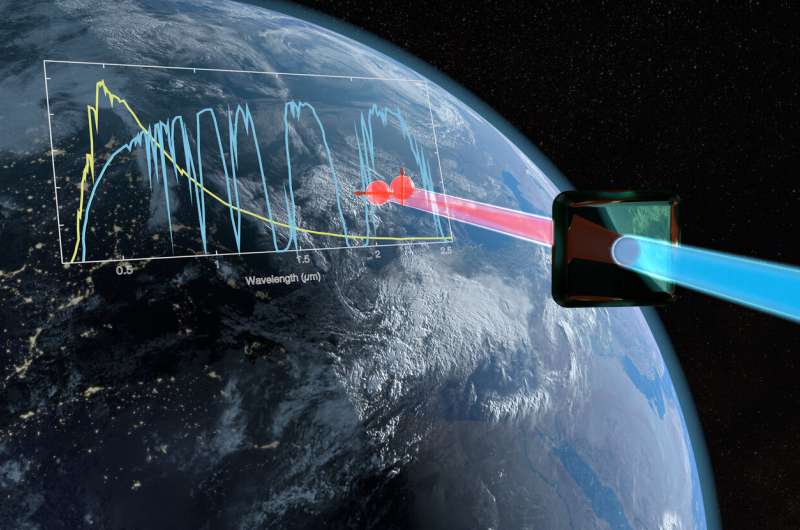Physicists develop new photon source for tap-proof communication

An international team with the participation of Prof. Dr. Michael Kues from the Cluster of Excellence PhoenixD at Leibniz University Hannover has developed a new method for generating quantum-entangled photons in a spectral range of light that was previously inaccessible. The discovery can make the encryption of satellite-based communications much more secure in the future.
A 15-member research team from the U.K., Germany and Japan has developed a new method for generating and detecting quantum-entangled photons at a wavelength of 2.1 micrometers. In practice, entangled photons are used in encryption methods such as quantum key distribution to completely secure telecommunications between two partners against eavesdropping attempts. The research results are presented to the public for the first time in the current issue of Science Advances.
It has been regarded as technically possible to implement encryption mechanisms with entangled photons in the near-infrared range of 700 to 1550 nanometers. However, these shorter wavelengths have disadvantages, especially in satellite-based communication. They are disturbed by light-absorbing gases in the atmosphere as well as the background radiation of the sun. With existing technology, end-to-end encryption of transmitted data can only be guaranteed at night, but not on sunny and cloudy days.
The international team led by Dr. Matteo Clerici from the University of Glasgow now reports a discovery that could solve this problem. The photon pairs entangled at the 2-micrometer wavelength would be significantly less influenced by the solar background radiation, according Prof. Dr. Michael Kues. In addition, so-called transmission windows exist in the Earth's atmosphere, especially for wavelengths of two micrometers, during which the photons are less absorbed by the atmospheric gases, in turn allowing more effective communication.
For their experiment, the researchers used a nonlinear crystal made of lithium niobate. They sent ultrashort light pulses from a laser into the crystal and a nonlinear interaction produced the entangled photon pairs with the new wavelength of 2.1 micrometers.
The research results published in the journal Science Advances describe the details of the experimental system and the verification of the entangled photon pairs: "The next crucial step will be to miniaturize this system by converting it into photonic integrated devices, making it suitable for mass production and for the use in other application scenarios," says Kues.
More information: Shashi Prabhakar et al. Two-photon quantum interference and entanglement at 2.1 μm, Science Advances (2020). DOI: 10.1126/sciadv.aay5195
Journal information: Science Advances
Provided by Leibniz University Hannover




















